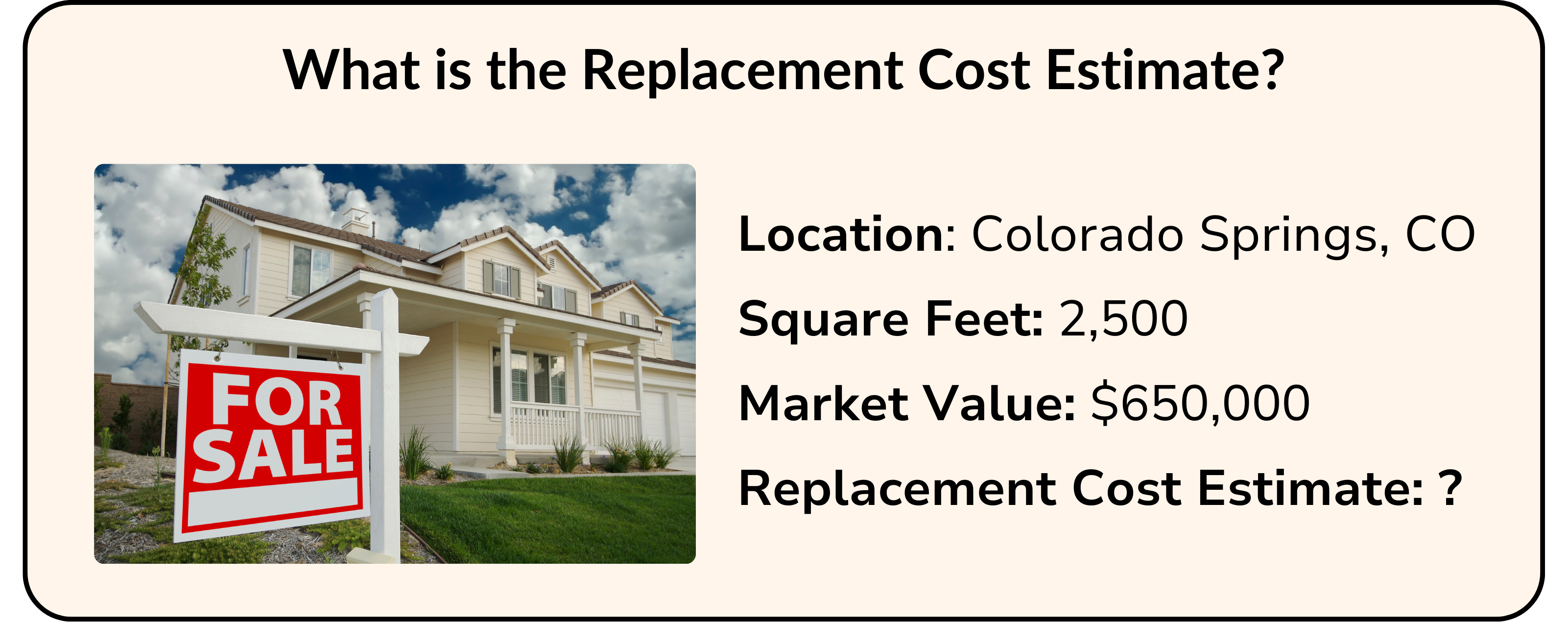
What is the Replacement Cost Estimate (RCE)?
Disclaimer: The content on our blog is intended for general informational and educational purposes only and should not be considered a substitute for professional advice. Insurance needs vary widely, and because insurance companies and policies differ, readers should consult with their insurance agent for personalized guidance. While we strive for accuracy and regularly update our content, we cannot guarantee its completeness or timeliness. HonestFlow is not responsible for any actions taken on insurance policies based on the information provided on our blog.

When purchasing home insurance, one of the most critical concepts to understand is the Replacement Cost Estimate (RCE). In this blog, we’ll delve into the importance of RCE, how it’s calculated, and why it differs from your home’s market value. We'll also cover how to find your RCE, how it can change, and how HonestFlow can help you find a policy that matches your insurance needs.
What is a Replacement Cost Estimate (RCE)?
Generally speaking, the Replacement Cost Estimate (RCE) is the estimated cost to rebuild your property to a "like-new" state if it were completely destroyed. It includes factors such as your home's size, local construction and labor costs, and your home's construction style. For instance, if your roof is damaged and made of clay tile shingles, the RCE will reflect the cost of replacing those specific materials, rather than cheaper alternatives.
Replacement Cost vs. Market Value

Many homeowners confuse the replacement cost of their home with its market value. Basing your Coverage A limits on market value can lead to significant coverage gaps or unnecessarily high premiums. Here are the two primary differences between these two values:
Market Value: The price your home could sell for on the open market, which includes the land, location, property taxes, and other external factors.
Replacement Cost: The cost to rebuild your home from scratch using materials of similar type and quality, excluding land value and other market-driven variables.
Why is Understanding RCE Important?
Understanding your RCE helps you set appropriate Coverage A limits. Here’s why this matters:
Avoid Over-Insuring: If your coverage limits are based on market value, you might end up with more insurance than you need, leading to higher premiums.
Prevent Under-Insuring: Setting limits below the RCE could result in paying substantial repair costs out of pocket if rebuilding expenses exceed your policy limits. This may lead to financial strain, especially if your home is severely damaged or destroyed.
How to Find Your Replacement Cost Estimate
Finding the exact cost to replace your home can be challenging. Here are some methods to evaluate the replacement cost estimate:
Professional Contractors: Hiring a local contractor or appraiser qualified in replacement cost estimates can provide a detailed and precise figure, though this can be expensive.
Insurance Company Tools: Most insurance companies use internal tools to estimate the replacement cost based on details from your insurance application and third-party property data. Ask your agent how their insurance company determines your replacement cost estimate.
Online Calculators: Online replacement cost calculators offer comprehensive rebuild estimates by considering factors such as square footage, age of your home, and its roof and foundation type. Although these tools are helpful, it's always best to confirm replacement cost estimates with insurance agents.
Can My Replacement Cost Change?
Replacement cost estimates can change over time due to several factors. Regularly reviewing and updating your replacement cost estimate with your insurance agent can help ensure you maintain adequate dwelling coverage to replace your home.
Market Conditions: Fluctuations in the cost of materials and labor can impact the overall replacement cost. For example, inflation can increase the cost of both construction materials and labor.
Home Improvements: Upgrades or renovations, such as kitchen remodeling or adding a deck, can increase your home's replacement cost. It’s essential to update your insurance policy to reflect these changes.
To help manage unexpected increases in rebuilding costs, you may consider adding dwelling endorsements to your policy. These endorsements typically extend coverage beyond the policy limit to provide additional protection for unforeseen repair costs. For specific information about your policy, ask your agent how the replacement cost estimate can change and whether you would benefit from the available dwelling endorsements.
Solutions with HonestFlow
Understanding the Replacement Cost Estimate of your home is crucial for selecting appropriate Dwelling (Coverage A) limits in your home insurance policy. Without this knowledge, you risk being over or underinsured, which can lead to higher premiums or having to pay significant repair costs out-of-pocket. Determining coverage limits should be done with an insurance agent, who can provide professional recommendations for your specific insurance needs.
HonestFlow connects insurance shoppers with verified insurance agents who can help evaluate your RCE and tailor coverage options to your specific needs. HonestFlow shoppers decide how many agents you receive quotes from, providing a personalized and controlled shopping experience. Additionally, HonestFlow shoppers receive our exclusive shopping tools, including our "Questions to Consider" guide. If you’re in the market for home insurance or want to speak with an insurance agent for specifics about your replacement cost estimate, request home insurance quotes with HonestFlow!

Questions to Consider - Replacement Cost Estimate
As an HonestFlow shopper, you’ll receive our exclusive “Questions to Consider” guide, designed to help you navigate coverage options with your insurance agent. Here are some questions to consider when evaluating the replacement cost estimate for your home:
1. What is the Replacement Cost Estimate for my home?
Understanding the replacement cost estimate can help ensure you have adequate coverage to rebuild your home in the event of a total loss. This figure should reflect current construction costs and materials.
2. Does the Replacement Cost Estimate include recent renovations?
In some cases, insurance companies may not have data on recent renovations such as installed decks or kitchen remodeling. Asking this helps you verify that any recent improvements or upgrades to your home are factored into the coverage. This helps ensure that your policy accurately reflects the increased value of your home.
3. Does my insurance company offer endorsements to account for inflation or other changes in replacement cost?
Inquiring about dwelling endorsements for inflation or changes in replacement cost estimate can help you maintain sufficient coverage over time. These endorsements can provide coverage for additional repair costs above the dwelling limit, protecting you from being underinsured.
©️ 2024 HonestFlow LLC. All Rights Reserved

